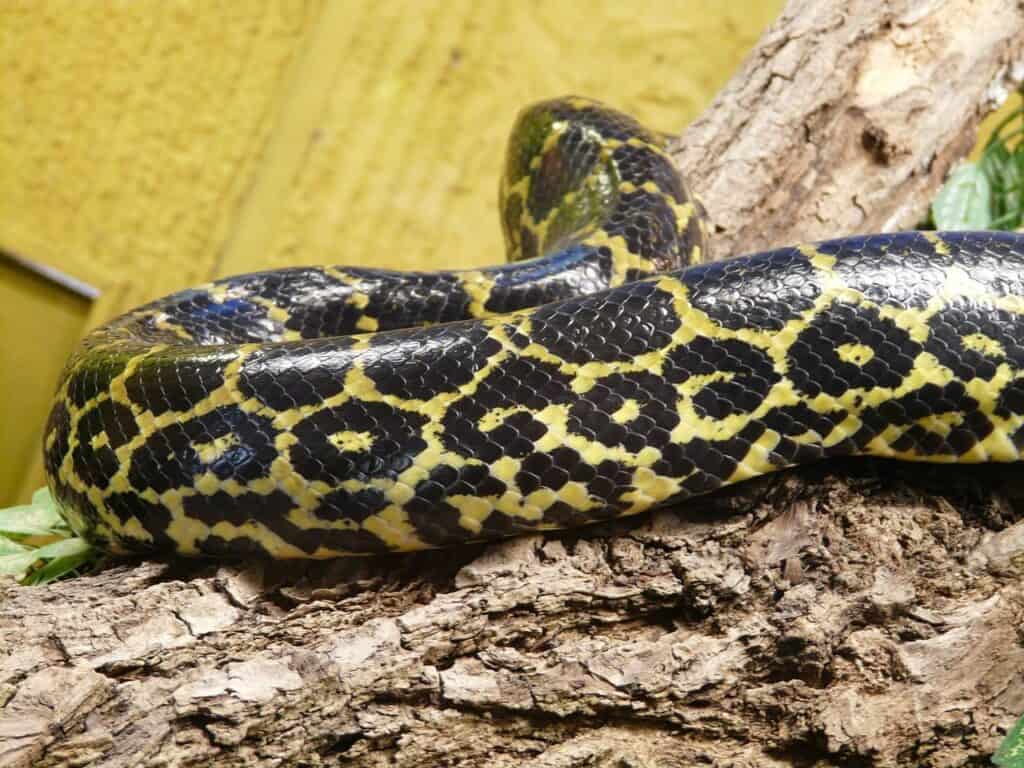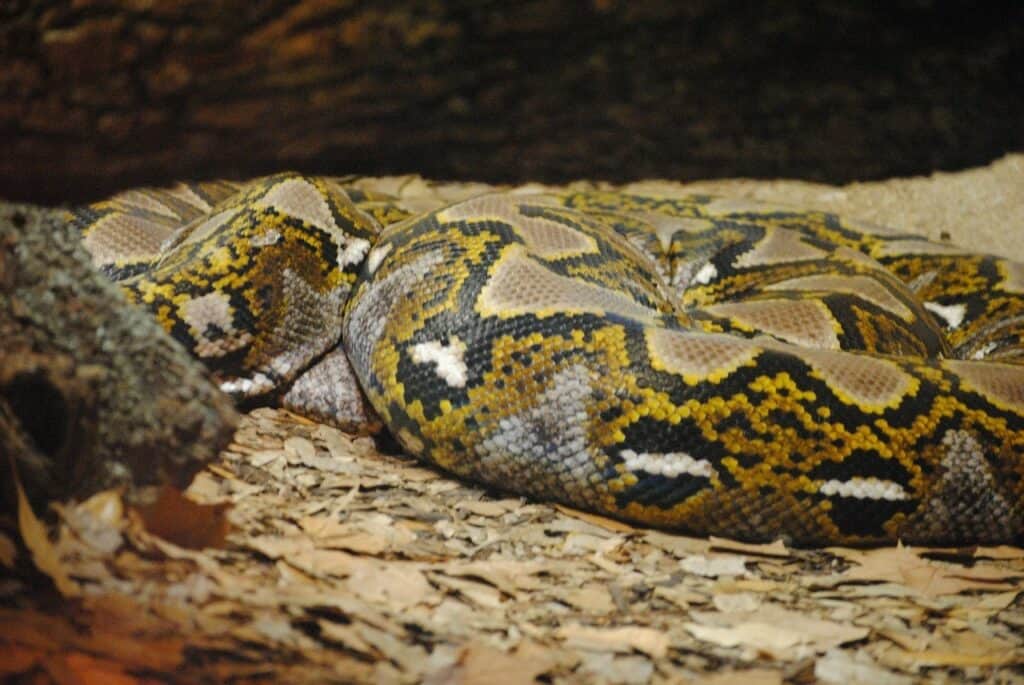Anacondas are any snakes of the genus Eunectes, though perhaps the most popular member of this genus is the green anaconda, perhaps best known for its staggering size and potential weight. Female green anacondas can grow up to 17 feet long, with males being relatively shorter. They typically weigh between 30 to 80 kg (66 to 176 lb). Anecdotal claims of larger and heavier specimens do exist, but are rarely definitively proven.
All anacondas are found in the lowlands area of many South American countries. These semi-aquatic snakes can be green, yellow, or dark-spotted (depending on the species), and lurk in slow-moving water, waiting for prey to walk or swim by.
These predators can be found in rainforests, tropical savannas, and grasslands. Read on to learn about anacondas and whether they are poisonous.

Anacondas: Poisonous or Venomous?

Anacondas are neither poisonous nor venomous. Snakes as a whole are not poisonous as you must ingest a toxin for something to be considered a poison. Snakes can, however, be venomous depending on the species because they can inject venom into their prey with their teeth to incapacitate the prey. Anacondas have curved teeth which they use to help incapacitate prey, but they do not inject any venom as part of the killing process.
How Do Anacondas Kill Their Prey?
Anacondas lurk in the water waiting for a tasty morsel to wander by their hiding place. When they sense prey, they lurch forward, ambushing the unsuspecting animal. They are constrictors, and kill their prey by squeezing them tightly until they suffocate.
Anacondas hold their prey with their teeth while they wrap their body around it and slowly constrict their bodies to suffocate the prey. The more the prey struggles, the tighter anacondas constrict. The constricting usually causes death due to respiratory arrest, but the prey can also drown because many anacondas pull their would-be meals into nearby water. After the prey dies, the snakes release their coils and then ingest their prey.

Where Do Anacondas Hunt?

Most anacondas hunt near swamps, lakes, riverbeds, and other bodies of water. Anacondas also hunt on savanna and it should be noted that animals may run across anacondas on dry savanna lands. Savannas are seasonally wet which makes them the perfect place for the water-loving anaconda. When the savanna dries out though, they bury themselves in mud and enter a state of dormancy. When the waters come back, the anaconda awakes, hungry for prey after their period of dormancy.
What Kind of Prey Do Anacondas Eat?
Anacondas eat a variety of terrestrial and aquatic prey, including reptiles, birds, mammals, and more. These large snakes can eat anywhere from 14% to 50% of their body mass and are likely to go after large prey.
Here is a list of some of the types of animals the anaconda is likely to eat:
- Capybaras (Hydrochoerus hydrochaeris)
- Wattled jacanas (Jacana jacana)
- Red side-necked turtles (Rhinemys rufipes)
- Collared peccaries (Pecari tajacu)
- Red-rumped agoutis (Dasyprocta leporine)
- Broad-snouted caimans (Caiman latirostris)
- Northern pudús Pudu mephistophiles
- South American tapirs (Tapirus terrestris)
Do Anacondas Eat Humans?
While the anaconda is a snake known to eat large prey, there are no substantiated reports of them killing humans. These snakes are believed to be large enough to eat humans, but the belief is that instances of anacondas attacking humans are rare because of the low human population in the areas where anacondas live.


Conclusion
Anacondas are one of the largest snakes in the world due to their size and they use it to their average when hunting for their meals. They don’t inject their victims with venom, but rather use their curved teeth to hold their prey in place while they constrict their bodies around their victims. While popular films suggest that anacondas are deadly to humans, you’ll likely not need to worry about being one’s dinner unless you wander into the rainforests of South America.
See Also:
Featured Image Credit by Blende12, Pixabay
